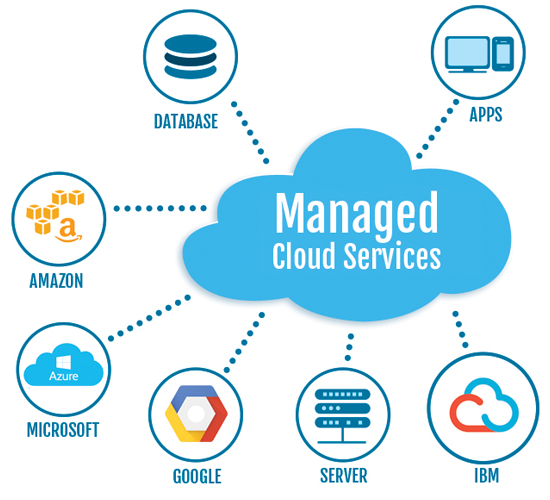LinkDaddy Cloud Services Decoded: Insider Insights right into Universal Cloud Service Advancements
LinkDaddy Cloud Services Decoded: Insider Insights right into Universal Cloud Service Advancements
Blog Article
Simplify Your Infrastructure With Cloud Provider
As organizations navigate the ever-evolving landscape of innovation and information monitoring, the function of cloud solutions in simplifying framework has actually ended up being significantly popular. Exactly how can services efficiently browse this shift and truly unlock the capacity of cloud services for simplifying their infrastructure?
Advantages of Cloud Solutions
Cloud services provide a streamlined technique to handling IT framework, giving services with cost-efficiency, versatility, and scalability. One of the vital advantages of cloud services is the scalability they supply.
Furthermore, cloud solutions get rid of the requirement for companies to purchase pricey software and hardware. This cost-efficiency is a significant advantage, specifically for tiny to medium-sized business seeking to decrease ahead of time prices. By making use of cloud solutions, services can access premium IT sources without the substantial price associated with standard facilities arrangements.
Moreover, cloud services supply organizations with the flexibility to access their information and applications from anywhere with an internet connection. This level of access enhances collaboration among teams, makes it possible for remote job, and raises total productivity. The versatility provided by cloud solutions encourages businesses to adapt swiftly to altering market conditions and consumer needs.
Cost Cost Savings and Scalability
In enhancement to the operational benefits highlighted earlier, the integration of cloud solutions into a business's facilities comes up with substantial cost savings and enhanced scalability. Cloud solutions use a pay-as-you-go model, allowing services to scale sources up or down based upon existing demands, thus preventing the costs linked with preserving excess ability. This flexibility allows companies to adjust quickly to changing demands without sustaining unnecessary costs.
Moreover, cloud solutions remove the requirement for ahead of time financial investments in hardware and software, lowering capital investment. Operating budget are additionally reduced as business no more need to manage and keep physical web servers, leading to reduced energy intake and IT staffing costs. In addition, cloud services supply automatic updates and maintenance, making certain that the facilities remains up-to-date and secure without requiring hands-on interventions.
Boosted Safety And Security Actions
Implementing rigid safety and security actions is paramount when incorporating cloud services into a firm's facilities to ensure and safeguard sensitive information compliance with market policies. Cloud service carriers provide improved security functions such as data file encryption, firewall software security, and multi-factor authentication to reduce cybersecurity dangers.
Additionally, regular security audits and conformity analyses aid recognize susceptabilities and guarantee adherence to market standards. Firms can likewise benefit from functions like automatic safety updates and real-time threat surveillance offered by cloud company. By focusing on safety and security procedures and staying positive in addressing possible threats, organizations can with confidence take advantage of cloud services while securing their important data from unapproved access or violations.
Transitioning to Cloud Infrastructure
To efficiently integrate cloud solutions right into a firm's infrastructure, a structured technique that resolves the change in the direction of cloud-based solutions is essential. Transitioning to cloud facilities includes mindful preparation and implementation to ensure a smooth migration procedure - cloud services press release.
When the assessment is full, additional info a movement technique need to be established. This approach must detail the timeline, resources, and responsibilities for relocating each component to the cloud. It is vital to communicate this plan plainly to all stakeholders to make sure alignment and decrease disruptions during the transition.
During the migration monitoring, process and testing are essential to determine and deal with any type of issues promptly. Regular checkpoints should be established to track progression and make essential adjustments. Furthermore, training for workers on making use of cloud services must be provided to ensure an effective transition and optimize the benefits of the new framework.
Ideal Practices for Cloud Fostering
Effective adoption of cloud solutions rests on the tactical positioning of organization purposes with technical abilities and organizational preparedness. To guarantee a smooth change to the cloud, companies should start by performing a detailed analysis of their current framework and determining which work are best fit for cloud movement. It is vital to involve crucial stakeholders from various departments in the decision-making process to acquire buy-in and address any kind of issues beforehand.
Another ideal method for cloud adoption is to prioritize security and compliance. Organizations must carefully examine the safety and security procedures offered by cloud provider go to the website and guarantee that their data is secured according to market criteria and regulatory requirements. Carrying out durable information encryption, access controls, and routine security audits can help alleviate risks related to cloud fostering.

Conclusion

As services browse the ever-evolving landscape of modern technology and information administration, the duty of cloud solutions in simplifying facilities has ended up being progressively popular - Cloud Services. Exactly how can companies efficiently navigate this change and genuinely unlock the possibility of cloud solutions for Full Report simplifying their facilities?
Cloud services use a structured approach to handling IT framework, giving services with scalability, cost-efficiency, and flexibility. By using cloud solutions, businesses can access top quality IT resources without the hefty price tag associated with conventional facilities configurations.
To make sure a smooth change to the cloud, companies must start by conducting an extensive assessment of their existing infrastructure and determining which work are best suited for cloud migration.
Report this page